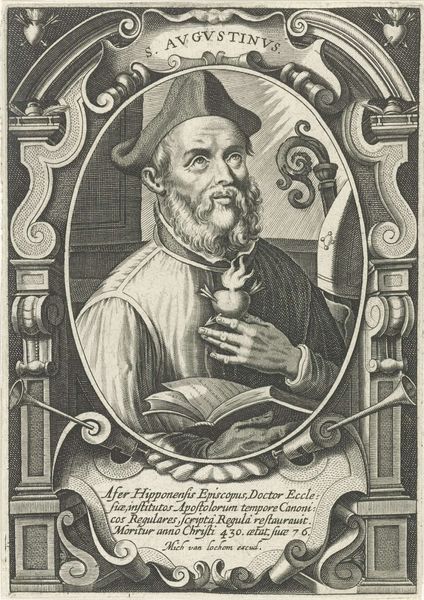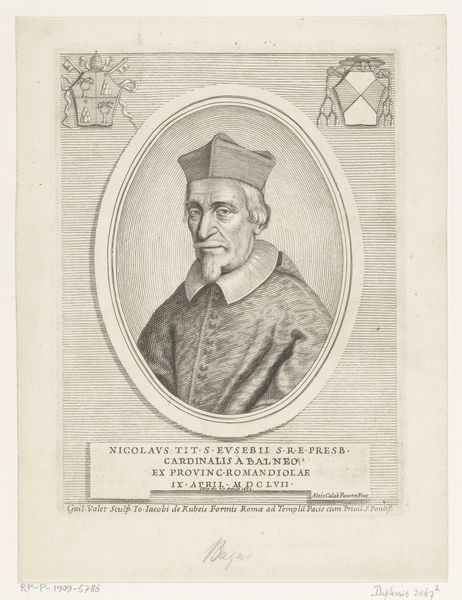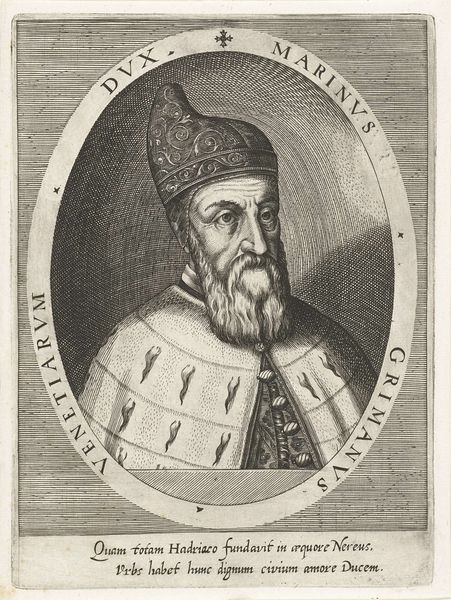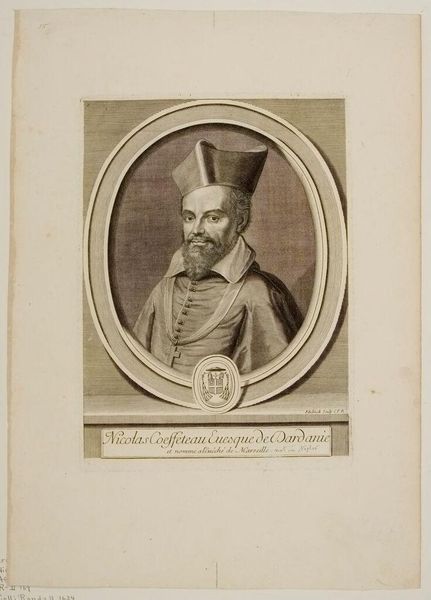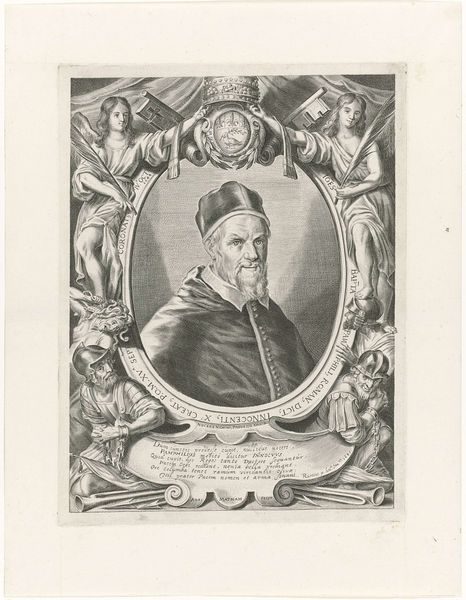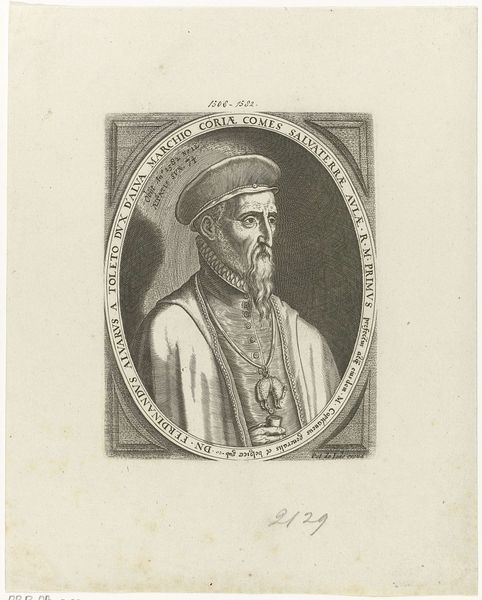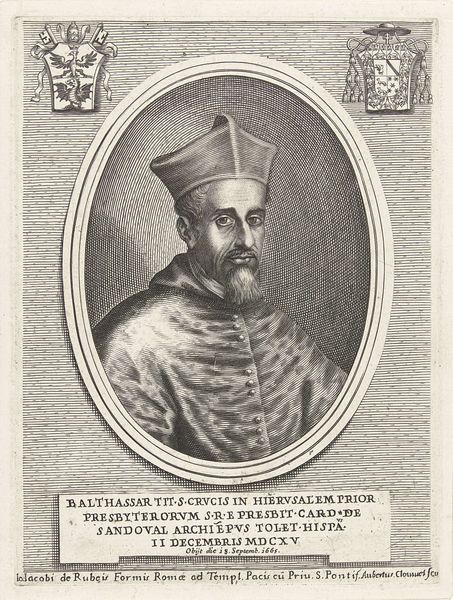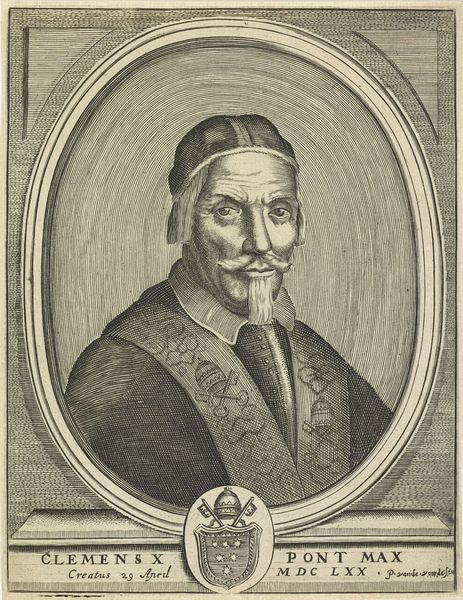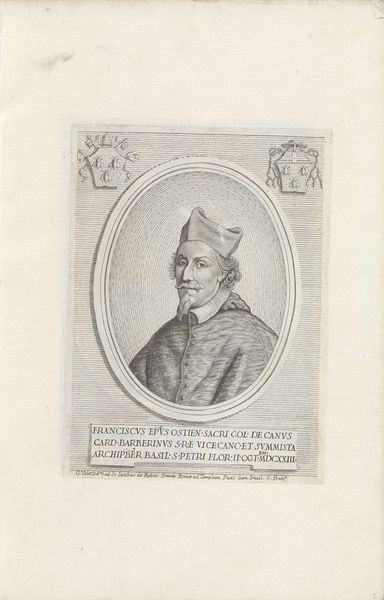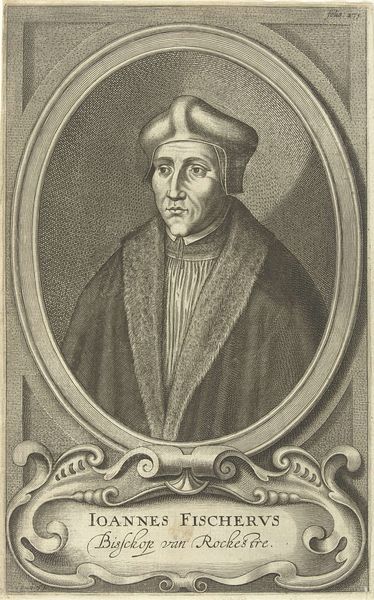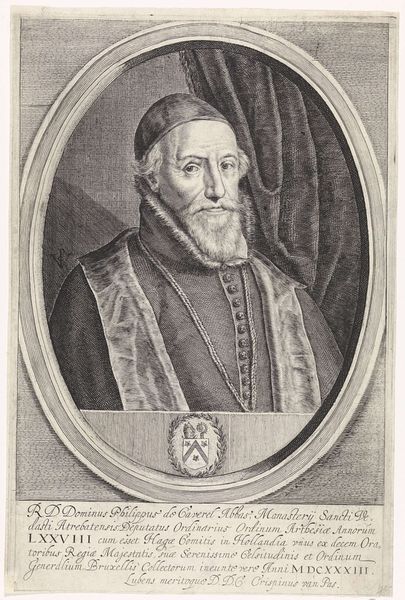
print, engraving
#
portrait
#
baroque
# print
#
old engraving style
#
historical photography
#
portrait reference
#
framed image
#
history-painting
#
engraving
Dimensions: height 204 mm, width 150 mm
Copyright: Rijks Museum: Open Domain
Editor: This engraving, "Portret van Paus Urbanus VIII" by Jacques Blondeau, dating back to sometime between 1665 and 1698, depicts the Pope in solemn detail. I'm immediately struck by the weight of history it carries. How do you interpret this work within its historical context? Curator: Well, considering this is a portrait of Pope Urban VIII, a figure who navigated the turbulent waters of the Counter-Reformation and the rise of absolutism, it's critical to examine it through that lens. How does this image uphold, or perhaps challenge, the visual language of power and authority prevalent in that era? Think about the socio-political impact the Church had, its influence on the people... Blondeau isn't simply making an image; he is constructing a narrative. Editor: So, you're saying that beyond just being a representation, the image is an argument for the Pope's legitimacy? Is that related to the placement of the Barberini coat-of-arms underneath the portrait? Curator: Exactly! It's a carefully constructed visual statement, linking Urban VIII to his lineage and consolidating his pontificate's authority. The inclusion of his family crest speaks volumes about the nepotism and power structures within the Church. The Baroque style also points towards a strategic visual agenda: grand displays of power meant to reassert influence and control during a time when the Catholic church had to fight hard to stay on top. What aspects of this piece make you think about it's role within the political climate of its time? Editor: I hadn't considered how actively the engraving participates in political messaging. Looking closely now, it's obvious Blondeau wanted to present Urban VIII as not just a spiritual leader, but as a figure of worldly authority and importance. Curator: Precisely. The personal and the political are inextricable in this portrayal, showing how power functions through careful construction and circulation of images. Think of how these visual messages reinforced the Church's control during a period of religious and social upheaval. It really does put the whole piece into a completely new perspective. Editor: This really encourages us to question how we see power, gender, and identity through the visual rhetoric of art history! Curator: Absolutely, and remember, Blondeau isn't merely reflecting history. His print actively shapes our understanding of it.
Comments
No comments
Be the first to comment and join the conversation on the ultimate creative platform.
